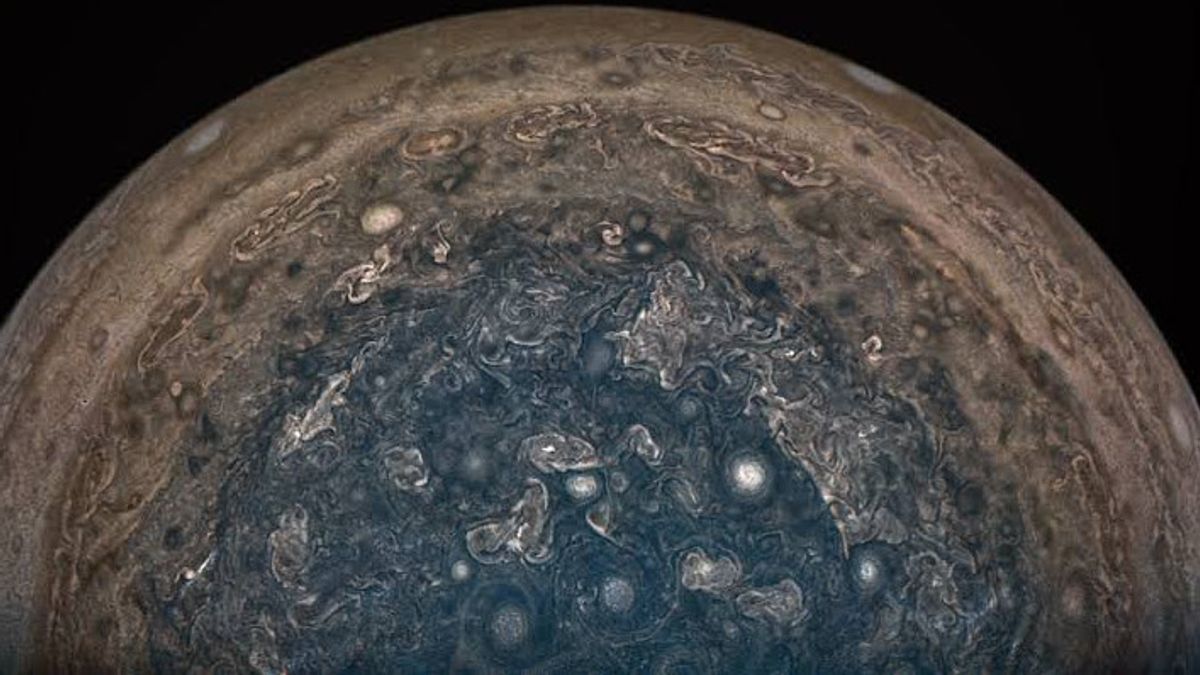JAKARTA - A study by astronomers has just provided the first detailed look at the dark side of the exoplanet dubbed "hot Jupiter". This is done by mapping the temperature based on altitude and the level of water present there.
The planet, which also has another name WASP-121b, is tidally locked to its star. Astronomers' observations, combined with measurements of the planet's permanent dayside, provide the first detailed view of an exoplanet's global atmosphere.
"We are now moving beyond taking isolated snapshots of specific regions of the exoplanet's atmosphere, to study them as true 3D systems," said Postdoc Research Lead at MIT's Kavli Institute for Astrophysics and Space. Research, Thomas Mikal-Evans.
The research, carried out by astronomers from MIT, has appeared in the journal Nature Astronomy. WASP-121b is a gas giant nearly twice the size of Jupiter.
This planet is a very hot Jupiter and was discovered in 2015, orbiting a star about 850 light-years from Earth. WASP-121b has one of the shortest orbits detected to date, circling its star in just 30 hours.
The planet is also tidally locked, so that the day side is permanently facing the star, while the night side is rotated forever into space.
"Hot Jupiter is famous for having a very bright daytime side, but a different star at night. WASP-121b's night side is about 10 times dimmer than the daytime side," said TESS Postdoc at MIT who co-authored the study, Tansu Daylan.
Astronomers have previously detected water vapor and studied how atmospheric temperature changes with altitude on the planet's dayside.
The dark side of the planet contributes to a very vicious water cycle. Where the daytime side has temperatures above 4,940F, the nights are cool enough at just 2,780F to incorporate them back into the water.
Meanwhile, the dark side is also cold enough to have clouds of iron and corundum (a mineral in rubies and sapphires), and we might see rain made of molten gems and titanium as the steam from the daytime side cools.
SEE ALSO:
Astronomers collected data using spectroscopy from the Hubble Space Telescope for two orbits in 2018 and 2019. Many scientists have used this method to study the bright side of exoplanets, but observing the dark side requires detecting small changes in the spectral lines indicating water vapor.
The lines helped scientists create temperature maps, and the team sent those maps through the model to help identify possible chemical presence.
According to MIT, this is the first detailed study of an exoplanet's global atmosphere. That comprehensive look will help explain where hot Jupiters like WASP-121b could have formed. Obviously, a planet like this is too dangerous for humans, but a more thorough examination of the exoplanet's atmosphere can help when searching for a truly habitable planet.
The English, Chinese, Japanese, Arabic, and French versions are automatically generated by the AI. So there may still be inaccuracies in translating, please always see Indonesian as our main language. (system supported by DigitalSiber.id)


















